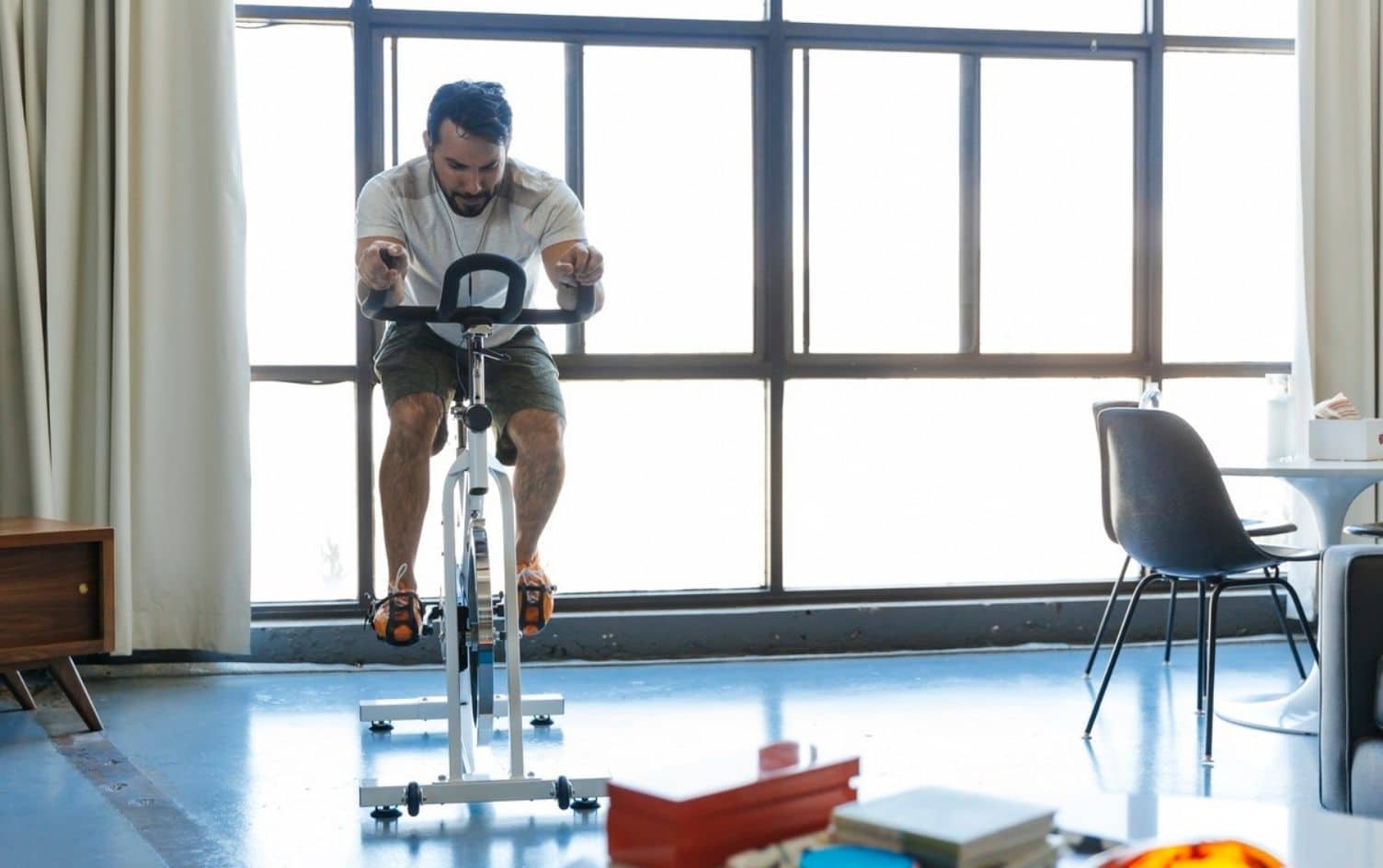With the increasing popularity and accessibility of indoor cycling workouts in gyms and at home, more people are taking advantage of the benefits of riding under a roof. For the stay-at-home parent, for example, indoor cycling is a perfect way to snag a workout without leaving the little ones unattended. Unlike outdoor biking, your indoor ride won’t be affected by rain, snow, extreme temperatures or high winds. Indoor cyclists can rest assured they won’t be hit by a car, have to swerve for a pedestrian, or risk crashing for any reason. Also, by having complete control of your resistance and revolutions per minute (RPMs), indoor biking is a low-impact way to challenge your aerobic and anaerobic energy systems effectively.
While there is always a space for low-intensity, steady-state cycling, this article highlights five workouts that ramp up the intensity and fully embrace the benefits of an indoor bike.
SURGES/BREAKAWAYS
Pick some tunes with a chorus that makes you want to dance, move and groove! Choose a resistance that feels like you are riding on a flat road. As the chorus comes around, add some tension and pick up your pedaling speed to about 100–110 RPMs. As the song calms down, return to your original tension and speed. These can also be done on a more advanced level by “jumping” out of the saddle at a higher tension and peddling at an RPM around 80.
STEADY RPM TEMPO TRAINING
Choose a 3–4 minute song or block of music with a steady beat that energizes you. Select an RPM that is comfortable (usually 75–85 RPM) and stick with it for the entire drill. Begin at a resistance that is only slightly challenging. Every 30–60 seconds, add on a touch of tension without letting your legs slow down. The last minute of this drill should be nearly impossible!
CLICK TO TWEET THIS ARTICLE > Bored with spinning your wheels (literally) on your indoor bike? Try these five drills from @MyFitnessPal to mix it up! #indoorcycling
PROGRESSIVE CLIMBS
Find a heavy song you can climb and grind with! Select a slightly challenging resistance that can be progressed while maintaining a leg speed of 60–70 RPM. Every minute, add a little bit of tension to the climb without letting the cadence drop below 60 RPM. Feel free to stand up, press your hips back over the saddle and turn this drill into a standing climb when needed. Unlike the tempo training drill, leg speed can decrease as tension goes up, but be careful not to let it drop too low.
SPIN-UPS
Select a resistance that is a touch heavier than a flat road. Begin pedaling at about 70 RPM. Gradually increase the leg speed by 5 or 10 RPM every 30–60 seconds without touching the resistance. This drill goes great with a 4–5-minute song that builds in excitement.
TABATA
This popular form of HIIT can also be done on a bike! The goal is to work as hard as possible for 20 seconds, followed by a 10-second recovery. For a true Tabata workout, you will complete a total of 8 rounds. Challenge yourself by looking at the output (or wattage) on your bike during this drill and pushing your limits. Higher resistance + higher speed = higher wattage. Be careful not to crank on too much tension or your speed (and therefore your wattage) suffers. Tabatas can be done using a stopwatch, or you can search for one of the many Tabata-specific songs available online.
Ready to take the next step? Unlock MyFitnessPal Premium to access custom goal settings, quick-log recipes, and guided plans from a registered dietitian. Premium users are 65% more likely to reach their weight loss goals!




